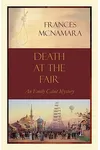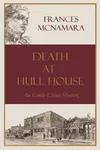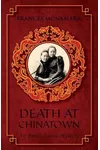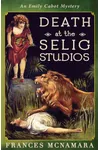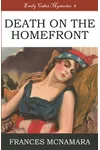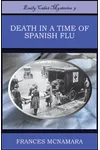Picture a Boston-born storyteller who sails the Charles River by day and weaves gripping historical mysteries by night—meet Frances McNamara! This former librarian turned author has captivated readers with her Emily Cabot Mysteries, a series that brings turn-of-the-century Chicago to life with vivid detail and clever sleuthing. With a knack for blending history and suspense, McNamara’s tales are as thrilling as a stormy race on Lake Michigan.
Her protagonist, Emily Cabot, a bold graduate student navigating a male-dominated academic world, solves crimes while tackling social issues like women’s rights and labor struggles. Inspired by McNamara’s own time at the University of Chicago Library, these stories are a love letter to Chicago’s gritty yet vibrant past.
The Making of Frances McNamara
Born in Boston, Frances McNamara grew up in a household shaped by her father’s career as an FBI agent and later Boston’s Police Commissioner. Her love for mysteries sparked early, fueled by devouring Nancy Drew, Agatha Christie, and Dorothy Sayers. After earning an English degree from Mount Holyoke College and master’s degrees in library science and English from Simmons College, she dove into the world of libraries, eventually landing at the University of Chicago. There, the 1890s architecture and access to historical archives ignited her passion for writing historical fiction. Her sailing adventures on the Charles River and Lake Michigan also added a splash of nautical flair to her creative process.
Frances McNamara’s Unforgettable Stories
McNamara’s signature series, the Emily Cabot Mysteries, kicks off with Death at the Fair (2008), set during the 1893 World’s Columbian Exposition. Emily, one of the first women graduate students at the University of Chicago, teams up with activist Ida B. Wells to clear a colleague’s name in a murder case, dodging corrupt politicians and gamblers. In Death at Hull House (2009), Emily works at the famous settlement house, tackling a smallpox epidemic and a murder mystery tied to Chicago’s immigrant community. Death at Pullman (2011) dives into the 1894 Pullman Strike, blending labor history with a suspenseful whodunit. Later works like Death at the Paris Exposition (2016) and Death in a Time of Spanish Flu (2020) showcase Emily’s growth as a sleuth across global fairs and pandemics.
McNamara’s style is a masterclass in historical immersion. Her meticulous research brings Chicago’s bustling streets, from sweatshops to silent film studios, to life. Emily’s fierce independence and moral compass reflect McNamara’s feminist sensibilities, while real-life figures like Jane Addams and Clarence Darrow add authenticity. Critics praise her ability to weave social commentary into fast-paced plots, making her books both educational and entertaining.
Why Frances McNamara Matters
Frances McNamara’s work shines a light on a pivotal era in American history, blending the excitement of mystery with the weight of social change. Her portrayal of women like Emily Cabot, who challenge societal norms, resonates with modern readers, while her vivid depictions of Chicago’s past offer a window into a transformative time. By spotlighting issues like immigration, labor rights, and gender equality, McNamara’s novels bridge history and today’s conversations, earning her a dedicated following among history buffs and mystery lovers alike.
- Birthplace: Boston, Massachusetts
- Key Works: Death at the Fair, Death at Hull House, Death at Pullman, Death at the Paris Exposition
- Notable Nomination: ForeWord Reviews Book of the Year Award for Death at Woods Hole
- Hobby: Sailing on the Charles River and Lake Michigan
Ready to step into Chicago’s past and solve a mystery with Emily Cabot? Grab Death at the Fair and dive into Frances McNamara’s thrilling world of historical intrigue!
